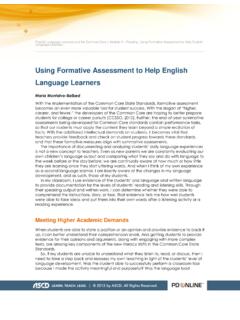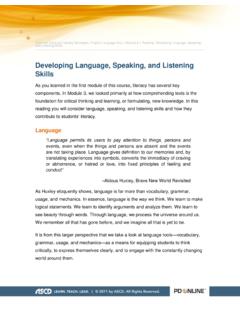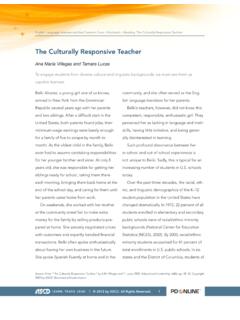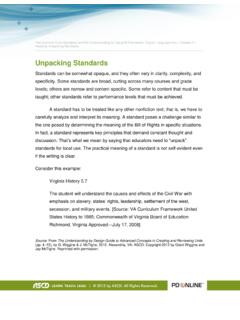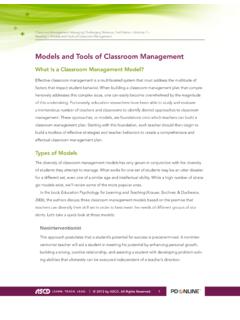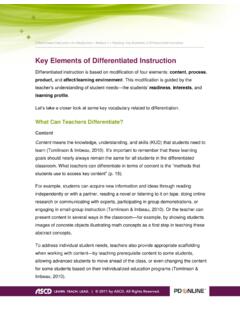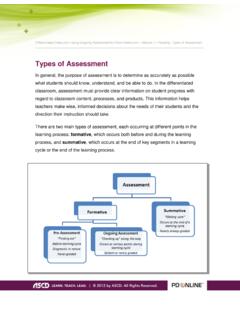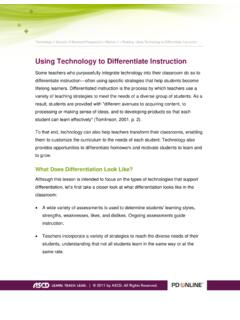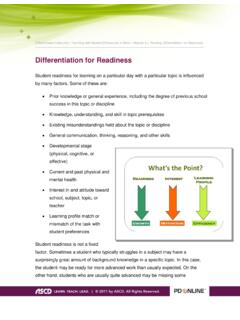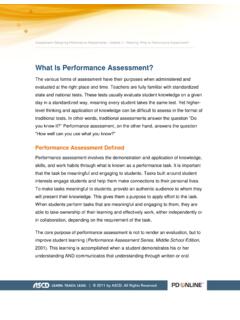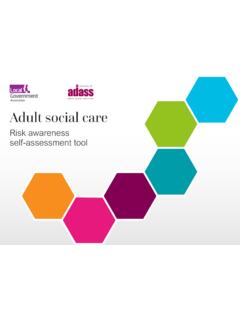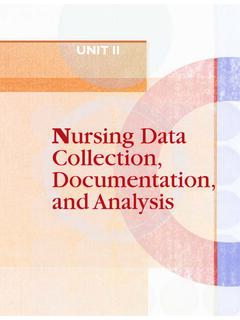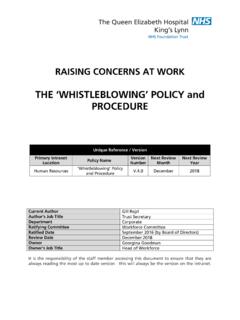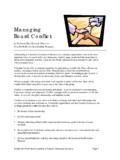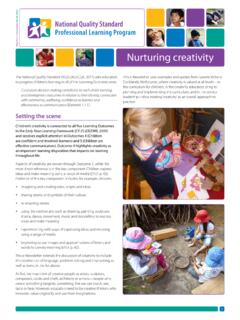Transcription of The Importance of Multicultural Education
1 Embracing Diversity: Effective Teaching > Module 1> Reading: The Importance of Multicultural Education _____ The Importance of Multicultural Education Geneva Gay It's not just an add-on or an afterthought. Curriculums infused with Multicultural Education boost academic success and prepare students for roles as productive citizens. Multiculturalism in schools and society is taking on new dimensions of complexity and practicality as demographics, social conditions, and political circumstances change. Domestic diversity and unprecedented immigration have created a vibrant mixture of cultural, ethnic, linguistic, and experiential plurality. Effectively managing such diversity in society and schools is at once a very old and a very new challenge. Benjamin Barber (1992) eloquently makes the point that America has always been a tale of peoples trying to be a People, a tale of diversity and plurality in search of unity. Cleavages among [diverse groups] .. have irked and divided Americans from the start, making unity a civic imperative as well as an elusive challenge.
2 (p. 41) Accomplishing this end is becoming increasingly important as the 21st century unfolds. People coming from Asia, the Middle East, Latin America, Eastern Europe, and Africa differ greatly from earlier generations of immigrants who came primarily from western and northern Europe. These unfamiliar groups, cultures, traditions, and languages can produce anxieties, hostilities, prejudices, and racist behaviors among those who do not understand the newcomers or who perceive them as threats to their safety and security. These issues have profound implications for developing instructional programs and practices at all levels of Education that respond positively and constructively to diversity. A hundred years ago, W. E. B. Du Bois (1994) proposed that the problem of the 20th century was conflict and controversy among racial groups, particularly between African and European Americans. He concluded that Between these two worlds [black and white], despite much physical contact and daily intermingling, there is almost no community of intellectual life or point of transference where the thoughts and feelings of one race can come into direct contact and sympathy with the thoughts and feelings of the other.
3 Source: From The Importance of Multicultural Education , by G. Gay, 2004, Educational Leadership, 61(4), pp. 30 35. Copyright 2004 by ASCD. Reprinted with permission. Embracing Diversity: Effective Teaching > Module 1> Reading: The Importance of Multicultural Education _____ Although much has changed since Du Bois's declarations, too much has not changed nearly enough. Of course, the color line has become more complex and diverse, and legal barriers against racial intermingling have been dismantled. People from different ethnic, racial, and cultural groups live in close physical proximity. But coexistence does not mean that people create genuine communities in which they know, relate to, and care deeply about one another. The lack of a genuine community of diversity is particularly evident in school curriculums that still do not regularly and systematically include important information and deep study about a wide range of diverse ethnic groups. As disparities in educational opportunities and outcomes among ethnic groups continue to grow, the resulting achievement gap has reached crisis proportions.
4 Multicultural Education is integral to improving the academic success of students of color and preparing all youths for democratic citizenship in a pluralistic society. Students need to understand how Multicultural issues shape the social, political, economic, and cultural fabric of the United States as well as how such issues fundamentally influence their personal lives. Conceptions of Multicultural Education Even though some theorists (Banks & Banks, 2002) have argued that Multicultural Education is a necessary ingredient of quality Education , in actual practice, educators most often perceive it either as an addendum prompted by some crisis or as a luxury. Multicultural Education has not yet become a central part of the curriculum regularly offered to all students; instead, educators have relegated it primarily to social studies, language arts, and the fine arts and have generally targeted instruction for students of color. These attitudes distort Multicultural Education and make it susceptible to sporadic and superficial implementation, if any.
5 Textbooks provide a compelling illustration of such an attitude: The little Multicultural content that they offer is often presented in sidebars and special-events sections (Loewen, 1995). Another obstacle to implementing Multicultural Education lies with teachers themselves. Many are unconvinced of its worth or its value in developing academic skills and building a unified national community. Even those teachers who are more accepting of Multicultural Education are nevertheless skeptical about the feasibility of its implementation. I would do it if I could, they say, but I don't know how. Preparing students to meet standards takes up all my time, others point out. School curriculums are already overburdened. What do I take out to make room for Multicultural Education ? A fallacy underlies these conceptions and the instructional behaviors that they generate: the perception of Multicultural Education as separate content that educators must append to existing curriculums as separate lessons, units, or courses.
6 Quite the contrary is true. Multicultural Education is more than content; it includes policy, learning climate, instructional delivery, leadership, and evaluation (see Banks, 1994; Bennett, 2003; Grant & Gomez, 2000). In its comprehensive form, Embracing Diversity: Effective Teaching > Module 1> Reading: The Importance of Multicultural Education _____ it must be an integral part of everything that happens in the Education enterprise, whether it is assessing the academic competencies of students or teaching math, reading, writing, science, social studies, or computer science. Making explicit connections between Multicultural Education and subject- and skill-based curriculum and instruction is imperative. It is not pragmatic for K 12 educators to think of Multicultural Education as a discrete entity, separated from the commonly accepted components of teaching and learning. These conceptions may be fine for higher Education , where specialization is the rule. But in K 12 schools, where the Education process focuses on teaching eclectic bodies of knowledge and skills, teachers need to use Multicultural Education to promote such highly valued outcomes as human development, Education equality, academic excellence, and democratic citizenship (see Banks & Banks, 2001; Nieto, 2000).
7 To translate these theoretical conceptions into practice, educators must systematically weave Multicultural Education into the central core of curriculum, instruction, school leadership, policymaking, counseling, classroom climate, and performance assessment. Teachers should use Multicultural content, perspectives, and experiences to teach reading, math, science, and social studies. For example, teachers could demonstrate mathematical concepts, such as less than/greater than, percentages, ratios, and probabilities using ethnic demographics. Younger children could consider the ethnic and racial distributions in their own classrooms, discussing which group's representation is greater than, less than, or equal to another's. Older students could collect statistics about ethnic distributions on a larger scale and use them to make more sophisticated calculations, such as converting numbers to percentages and displaying ethnic demographics on graphs. Students need to apply such major academic skills as data analysis, problem solving, comprehension, inquiry, and effective communication as they study Multicultural issues and events.
8 For instance, students should not simply memorize facts about major events involving ethnic groups, such as civil rights movements, social justice efforts, and cultural accomplishments. Instead, educators should teach students how to think critically and analytically about these events, propose alternative solutions to social problems, and demonstrate understanding through such forms of communication as poetry, personal correspondence, debate, editorials, and photo essays. Irvine and Armento (2001) provide specific examples for incorporating Multicultural Education into planning language arts, math, science, and social studies lessons for elementary and middle school students and connecting these lessons to general curriculum standards. One set of lessons demonstrates how to use Navajo rugs to explain the geometric concepts of perimeter and area and to teach students how to calculate the areas of squares, rectangles, triangles, and parallelograms. These suggestions indicate that teachers need to use systematic decision-making approaches to accomplish Multicultural curriculum integration.
9 In practice, Embracing Diversity: Effective Teaching > Module 1> Reading: The Importance of Multicultural Education _____ this means developing intentional and orderly processes for including Multicultural content. The decision-making process might involve the following steps: Creating learning goals and objectives that incorporate Multicultural aspects, such as Developing students' ability to write persuasively about social justice concerns. Using a frequency matrix to ensure that the teacher includes a wide variety of ethnic groups in a wide variety of ways in curriculum materials and instructional activities. Introducing different ethnic groups and their contributions on a rotating basis. Including several examples from different ethnic experiences to explain subject matter concepts, facts, and skills. Showing how Multicultural content, goals, and activities intersect with subject-specific curricular standards. Virtually all aspects of Multicultural Education are interdisciplinary.
10 As such, they cannot be adequately understood through a single discipline. For example, teaching students about the causes, expressions, and consequences of racism and how to combat racism requires the application of information and techniques from such disciplines as history, economics, sociology, psychology, mathematics, literature, science, art, politics, music, and health care . Theoretical scholarship already affirms this interdisciplinary need; now, teachers need to model good curricular and instructional practice in elementary and secondary classrooms. Putting this principle into practice will elevate Multicultural Education from impulse, disciplinary isolation, and simplistic and haphazard guesswork to a level of significance, complexity, and connectedness across disciplines. Multiculturalism and Curriculum Development How can teachers establish linkages between Multicultural Education and the disciplines and subject matter content taught in schools? One approach is to filter Multicultural Education through two categories of curriculum development: reality/representation and relevance.
